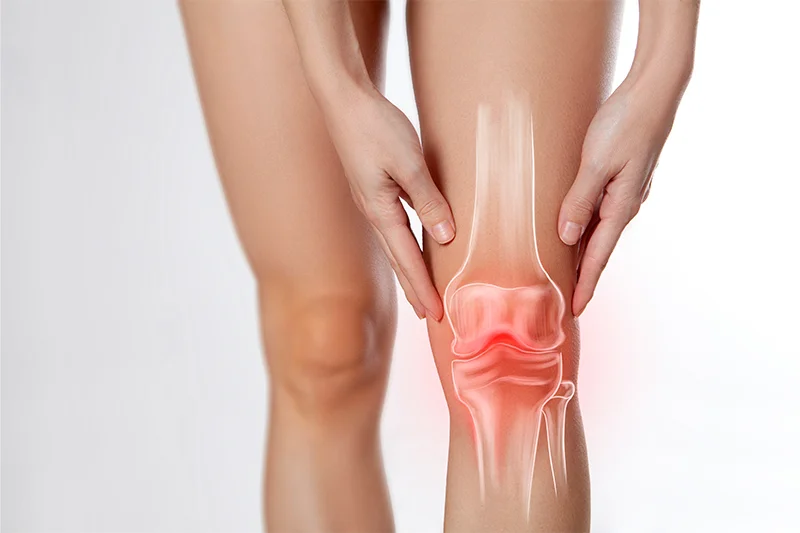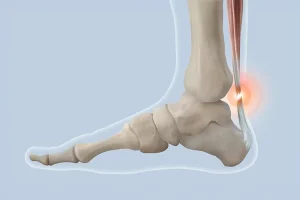Knee arthroscopy
Modern minimally invasive treatment for mild to moderate joint conditions
Home » Orthopedic Surgery » Knee arthroscopy
Conditions Treated

Regain knee mobility through safe and precise surgery.
If you are experiencing persistent discomfort, difficulty moving, or joint stiffness, and traditional treatments have not brought the desired results, knee arthroscopy may be an effective solution.
At the VenArt Clinic, our team of orthopedic surgeons with extensive expertise offers you an effective, safe, and minimally invasive solution for knee joint conditions.
Book an Appointment
What is knee arthroscopy?
Knee arthroscopy is a minimally invasive surgical procedure used to diagnose and treat conditions inside the knee joint. The procedure is performed using an instrument called an arthroscope, a thin tube with a video camera and light source, which is inserted through a small incision in the skin.
Through arthroscopy, the doctor can view the internal structures of the knee on a monitor and perform precise surgical maneuvers through very small additional incisions—such as repairing or removing a torn meniscus, smoothing damaged cartilage, or reconstructing ligaments.
It is a preferred method because it involves less postoperative pain, faster recovery, and a reduced risk of complications, compared to open surgery.
Conditions that can be treated with arthroscopy
Knee arthroscopy is indicated for multiple joint conditions, including:
- Meniscal injuries (partial or total tears, degenerated meniscus): can cause pain, locking, or instability;
- Articular cartilage injuries (chondropathy, chondromalacia): treated by smoothing or microfracturing;
- Ligament injuries (e.g., anterior cruciate ligament): diagnosed and sometimes treated arthroscopically;
- Intra-articular foreign bodies (bone or cartilage fragments): can be removed during the procedure;
- Synovitis (inflammation of the synovial membrane): visualized and treated by partial synovectomy.
Arthroscopy is often used as a diagnostic method in cases where imaging investigations do not provide sufficient information.

Symptoms that may indicate the need for arthroscopy
Intervention is indicated when the patient presents with:
- Persistent knee pain, especially during movement or exertion;
- Joint locking or the feeling that the knee is “locking up”;
- Recurrent swelling or inflammation;
- Instability or feeling of weakness in the joint;
- Abnormal noises in the knee (popping, cracking).
If these symptoms persist despite conservative treatments (medication, physical therapy, injections), arthroscopy may be the next step in treatment.
Advantages of knee arthroscopy
Compared to traditional surgery, arthroscopy offers multiple benefits:
- Small incisions: reduce the risk of infection and speed up healing;
- Reduced postoperative pain: due to the minimally invasive approach;
- Short hospital stay: in most cases, the patient goes home on the same day;
- Quick recovery: patients can resume their normal activities within a few days or weeks, depending on the complexity of the procedure;
- Better aesthetic result: very small, almost imperceptible scars.
How is knee arthroscopy performed?
Knee arthroscopy is a minimally invasive surgical procedure that allows the knee joint to be explored and treated from the inside through very small incisions.
- An arthroscope—a thin tube with a video camera and light source—is inserted through an incision of a few millimeters.
- Through other small incisions, the doctor inserts special instruments to perform the necessary procedures (e.g., removal of a portion of the meniscus, cartilage smoothing, extraction of an intra-articular foreign body).
- The procedure is usually performed under spinal anesthesia and is short, lasting between 30 and 60 minutes.
Knee arthroscopy price
The price of arthroscopy varies depending on the type of injury, the complexity of the procedure, and the medical services included in the package (anesthesia, hospitalization, recovery, preoperative investigations, etc.).
For an accurate estimate, a medical evaluation is required. Contact us for details and appointments.
How long does recovery take after knee arthroscopy?
Recovery after arthroscopy is usually quick and effective, but it is very important to follow your doctor’s instructions to get the best results:
- Early mobilization: walking is possible shortly after surgery (sometimes with the help of crutches);
- Personalized physical therapy: the exercise program is tailored to each case, starting from the very first days;
- Applying ice and keeping the leg elevated: to reduce inflammation and pain;
- Regular medical monitoring: to track the healing process.
In simple cases (e.g., meniscus injury), normal activity can be resumed after 2-4 weeks.
When can you walk after arthroscopy?
After knee arthroscopy, walking is possible from the first day, depending on the type of procedure and the doctor’s recommendation. Initially, crutches may be needed for a few days.
In general:
- After simple procedures (e.g., removal of a torn meniscus), patients can walk with light support in 1–2 days and without support after about a week.
- After more complex procedures (e.g., anterior cruciate ligament reconstruction), the period of partial support may last 2–4 weeks, followed by active medical recovery.
We are here to help you
If you are experiencing knee problems and the symptoms persist, we recommend that you schedule a consultation. At the VenArt Clinic, you will receive an accurate assessment, personalized treatment, and access to the most modern orthopedic treatment methods in a friendly and empathetic environment.
Medical Team
Frequently Asked Questions
How long does the procedure take?
Generally, between 30 and 60 minutes.
How long do I have to stay in the hospital?
Usually, discharge occurs on the same day or the next day.
When can I go again?
Immediately after surgery, with support. Resuming normal walking varies between a few days and two weeks.
Do I need physical therapy after arthroscopy?
Yes, recovery is more effective with the help of physical therapy.
Will there be scars?
Only small marks, a few millimeters long.
Can I drive after the procedure?
Generally, after 5–7 days, if there is no more pain and the knee has good mobility.
When can I return to sports?
Between 4 and 12 weeks, depending on the injury and how recovery progresses.








